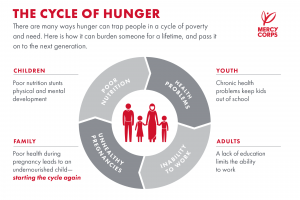In order to understand the world food system, we need examine it through the lens of systems theory; the interdisciplinary study of systems. In the videos from Complexity Academy we were introduced to concepts like nonlinear systems, earth systems, and resilience thinking as well as the differences between mechanical and living systems. These are critical concepts in understanding how the global food system is organized and how the various parts interact with one another through positive and negative feedback loops.
I was able to interact with the food system through my group action project working with the Center for Food Safety. Our group developed a social media campaign, legislative toolkit, petition, and wrote letters to the editors of multiple local papers in order to raise awareness regarding the dangers of Washington state dairy CAFOs. These kinds of campaigns take time to develop and timing is very important. Because of COVID-19 and the recent death of George Floyd, the media climate and public zeitgeist limited our ability to message effectively. Even though our real-world impact was minimal, I found the experience to be valuable because it allowed me to engage with our course material in ways that would not have been possible otherwise.
When viewing my action project through the lens of our class material we can see the negative effects that factory farming cause to the larger earth system as well as its negative ecological and social justice impacts. In Washington state over 260,000 adult dairy cattle generate more than 26 million pounds of manure daily. CAFOs are prevalent in communities surrounding the Puget Sound, with 400+ unlined manure lagoons near waters that feed into the Sound. About 35% of all Washington dairy cows are located in a 280-square-mile area in Yakima County, equating to a city of 2.3 million people without any sewage treatment (CFS).
CAFOs are externalizing public health and environmental costs to the public, including the costs of contaminated drinking water and the subsequent health impacts. The cost of fixing nitrate pollution of drinking water can run into the millions of dollars and the costs to fix them are borne, in part, by local residents. The average cost of water to avoid contaminated tap water exceeds affordability thresholds, and disproportionately affect low-income and Spanish-speaking residents (CFS).
My action project allowed me to develop some important tools that I can use to explore complicated topics about our world food system. It also helped me learn how to ask the right kinds questions.





